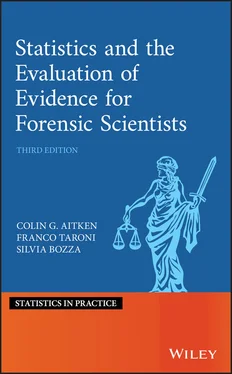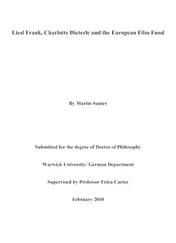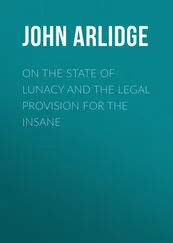Franco Taroni - Statistics and the Evaluation of Evidence for Forensic Scientists
Здесь есть возможность читать онлайн «Franco Taroni - Statistics and the Evaluation of Evidence for Forensic Scientists» — ознакомительный отрывок электронной книги совершенно бесплатно, а после прочтения отрывка купить полную версию. В некоторых случаях можно слушать аудио, скачать через торрент в формате fb2 и присутствует краткое содержание. Жанр: unrecognised, на английском языке. Описание произведения, (предисловие) а так же отзывы посетителей доступны на портале библиотеки ЛибКат.
- Название:Statistics and the Evaluation of Evidence for Forensic Scientists
- Автор:
- Жанр:
- Год:неизвестен
- ISBN:нет данных
- Рейтинг книги:3 / 5. Голосов: 1
-
Избранное:Добавить в избранное
- Отзывы:
-
Ваша оценка:
Statistics and the Evaluation of Evidence for Forensic Scientists: краткое содержание, описание и аннотация
Предлагаем к чтению аннотацию, описание, краткое содержание или предисловие (зависит от того, что написал сам автор книги «Statistics and the Evaluation of Evidence for Forensic Scientists»). Если вы не нашли необходимую информацию о книге — напишите в комментариях, мы постараемся отыскать её.
he leading resource in the statistical evaluation and interpretation of forensic evidence
The third edition of
is fully updated to provide the latest research and developments in the use of statistical techniques to evaluate and interpret evidence. Courts are increasingly aware of the importance of proper evidence assessment when there is an element of uncertainty. Because of the increasing availability of data, the role of statistical and probabilistic reasoning is gaining a higher profile in criminal cases. That’s why lawyers, forensic scientists, graduate students, and researchers will find this book an essential resource, one which explores how forensic evidence can be evaluated and interpreted statistically. It’s written as an accessible source of information for all those with an interest in the evaluation and interpretation of forensic scientific evidence.
Discusses the entire chain of reasoning–from evidence pre-assessment to court presentation; Includes material for the understanding of evidence interpretation for single and multiple trace evidence; Provides real examples and data for improved understanding. Since the first edition of this book was published in 1995, this respected series has remained a leading resource in the statistical evaluation of forensic evidence. It shares knowledge from authors in the fields of statistics and forensic science who are international experts in the area of evidence evaluation and interpretation. This book helps people to deal with uncertainty related to scientific evidence and propositions. It introduces a method of reasoning that shows how to update beliefs coherently and to act rationally. In this edition, readers can find new information on the topics of elicitation, subjective probabilities, decision analysis, and cognitive bias, all discussed in a Bayesian framework.


 is known,
is known,  and
and  .
.
 and
and  are said to be dependent if the knowledge that
are said to be dependent if the knowledge that  has occurred affects the probability that
has occurred affects the probability that  will occur, and vice versa . For example, let
will occur, and vice versa . For example, let  be the outcome of a draw of a card from a well‐shuffled pack of 52 playing cards. This card is not replaced in the pack so there are now only 51 cards in the pack. Let
be the outcome of a draw of a card from a well‐shuffled pack of 52 playing cards. This card is not replaced in the pack so there are now only 51 cards in the pack. Let  be the draw of a card from this reduced pack of cards. Let
be the draw of a card from this reduced pack of cards. Let  be the event ‘ an Ace is drawn ’. Thus
be the event ‘ an Ace is drawn ’. Thus  = 4/52 = 1/13. (Note here the conditioning information
= 4/52 = 1/13. (Note here the conditioning information  that the pack is well‐shuffled, with its implication that each of the 52 cards is equally likely to be drawn has been omitted for simplicity of notation; explicit mention of
that the pack is well‐shuffled, with its implication that each of the 52 cards is equally likely to be drawn has been omitted for simplicity of notation; explicit mention of  will be omitted in many cases but its existence should never be forgotten.) Let
will be omitted in many cases but its existence should never be forgotten.) Let  be the event ‘ an Ace is drawn ’ also. Then
be the event ‘ an Ace is drawn ’ also. Then  is the probability that an Ace was drawn at the second draw, given that an Ace was drawn at the first draw (and given everything else that is known, in particular that the first card was not replaced). There are 51 cards at the time of the second draw of which 3 are Aces. (Remember that an Ace was drawn the first time which is the information contained in
is the probability that an Ace was drawn at the second draw, given that an Ace was drawn at the first draw (and given everything else that is known, in particular that the first card was not replaced). There are 51 cards at the time of the second draw of which 3 are Aces. (Remember that an Ace was drawn the first time which is the information contained in  .) Thus
.) Thus  . It is now possible to formulate the third law of probability for dependent events.
. It is now possible to formulate the third law of probability for dependent events.

 and the presence of DAI by
and the presence of DAI by  . Then various probabilities for the incidences of the two types of injuries in the population of road accident fatalities can be estimated from this sample of 120 fatalities. Thus
. Then various probabilities for the incidences of the two types of injuries in the population of road accident fatalities can be estimated from this sample of 120 fatalities. Thus  is estimated by 14/120, the total number of DVI divided by the total number of fatalities. Similarly
is estimated by 14/120, the total number of DVI divided by the total number of fatalities. Similarly  is estimated by 96/120, the number of DAI divided by the total number of fatalities.
is estimated by 96/120, the number of DAI divided by the total number of fatalities.

 and
and  , the third law of probability, ( 1.8) may be written as
, the third law of probability, ( 1.8) may be written as










